If there was ever a favorite fishing spot on the Vineyard, Lobsterville is it. As fishing spots go, it is fairly easy to get to. It is far enough away to feel remote and, most important of all, there are usually fish to be caught.
Lobsterville is ideal at night in the spring and superb at dawn in the autumn. Some fishermen swear by the changing tides, and that’s a respectable theory. But when striped bass and bluefish are reported to be at Lobsterville they are usually being caught at dusk in the spring and at dawn in the late summer and fall. It’s a spot where very young fishermen who are learning to cast get their lures out beyond the schooling fish. When a youngster reels in the lure it passes within striking distance of the fish. There are not many spots on the Vineyard so perfectly suited to the youngest of fishermen.
From the air, Lobsterville looks like a bowl, part of Menemsha Bight. It is an ideal area to collect schools of fish, which congregate to feed. Those schools, in turn, attract the bigger fish.
Dogfish Bar marks the western edge of Lobsterville Beach. It is the northernmost part of Gay Head and protrudes into Vineyard Sound. This is where the changing currents of Vineyard Sound have a way of bringing together fish of all sizes. It is more than a mile-long walk from the Lobsterville parking lot but worth every step. In the spring, Dogfish Bar is known to attract large striped bass. Flyfishermen love to fish there late at night. The fish can be heard to surface close to shore. Despite the attraction of those nearby game fish, however, this is not such a great spot for youngsters because it is so far to walk.
There are no two fishing spots more strikingly different than Lobsterville and Squibnocket. While Lobsterville faces Vineyard Sound and the waves there rarely get much higher than six inches, Squibnocket offers the surf fisherman an adventure even when there aren’t any fish.
The scale of Squibnocket is vast, both in fish and in waves. Huge rollers come pouring in from the ocean. But beneath the surface, many a fisherman will swear, whale-sized stripers are known to visit. On any autumn day a daytime visitor might observe the small fleet of charter boats to the south. They fish the Island’s prime daytime locations for striped bass. They cast their lines among rocks - protuberances from the water that are individually known to the cognoscenti - in pursuit of fish in their hiding places.
But at night, these same fish become more courageous and tuck inside the waves in pursuit of large bait fish. Squibnocket is only for the experienced surf angler.
From Menemsha to Lake Tashmoo is an area described by anglers as the north shore. There are many secrets closely held by fishermen about this quietly popular fishing area. When they speak of specifics about the north shore, they lower their voices to a whisper. They speak softly of places such as Makonikey, Lambert’s Cove and Paul’s Point. They speak of watching the sunrise paint the Elizabeth Islands with gold after they have enjoyed a night of splendid fishing.
A fisherman can go several times to a familiar spot and not catch a single under-sized false albacore. But one night under the stars can make him feel as though a lifetime of tangled lines and snagged hooks has been justified.
Lake Tashmoo is a premiere north shore fishing spot. The Tashmoo Pond opening is accessible. It attracts all species of fish.
If you want to find fish, look for what they are feeding on. Lake Tashmoo is an underwater Grand Central Station for bait fish of all sizes. In the autumn the bait can get so thick next to the jetty that you can’t see through to the shallow bottom.
The Island’s bridges are the most underrated fishing spots, yet they are among the easiest to get too. The draw bridge in Vineyard Haven, known as the Korean and Vietnam Memorial Bridge, is an excellent fishing spot on an outgoing tide. Tides play an important role when it comes to fishing Vineyard openings. An outgoing tide soon after sunset is superb. But that doesn’t necessarily rule out great fishing late at night with an outgoing tide.
The most popular and most accessible fishing spots is the Big Bridge (American Legion Memorial Bridge), which marks the boundary between the towns of Oak Bluffs and Edgartown. Under the bridge the currents rush between Sengekontacket Pond and Nantucket Sound. If there are fish biting in the ocean, there are usually fish of some size at the Big Bridge. On any given night there are usually one or two fishermen with lines right off the bridge. Large striped bass have been known to take up residence under the bridge. For years, one smart striped bass that earned the name White Tail seemed to hang under the bridge.
Chappaquiddick offers an enormous number of fishing choices. To the fisherman without a four-wheel-drive vehicle there is Wasque Point. This prime fishing spot is considered the best fishing corner in the Northeast. Wasque is an Indian name that means place on the other side, or the farthest side. This is where the currents of the Atlantic Ocean meet the currents of Muskeget channel. It is the southeasternmost corner of our Island, where strong currents come together to form a rip. Striped bass and bluefish love to feed at Wasque because they can pick the bait out easily. These powerful currents bring schools of disoriented small bait together and present them on a platter to any larger fish. Any time a fisherman can drop a lure in the same general area, he too can find a dinner.
At the Chappaquiddick ferry point, shore fishermen have easy access to the crazy bonito and false albacore schools that pass back and forth between the inner and outer harbors of Edgartown.
Chappaquiddick offers fishing spots with a sliding scale of access. North Neck offers some limited public parking for a premiere spot that can sometimes deliver winners. North Neck overlooks the Cape Pogue Pond opening to the Sound, more simply called The Gut. Wherever ponds open into larger bodies of water, schools of fish are known to gather. As magically as candy stores attract children, pond openings attract bait and the big swimmers looking for that bait.
The Cape Pogue lighthouse is one of the Island’s most isolated, difficult-to-get-to fishing spots. The lighthouse sits on a bluff overlooking the northeasternmost corner of Chappaquiddick. Like Wasque, it is where currents meet. Unlike Wasque, it is difficult of access and a visitor is likely to find only one or two fishermen at the most.
Ask any shore fisherman during the derby where he caught his winner and his easy reply is usually the south shore. His answer may be an evasion of the truth, but there is no doubt fishermen do catch big fish along the Island’s south shore.
The south shore extends from Wasque on the far eastern end all the way to Squibnocket to the west. There are a number of prime fishing locations. On the far eastern end of Norton Point there is Metcalf’s Hole, a traditional fishing spot on South Beach where bait fishermen are known to spend the night.
Moving westward, fishermen without four-wheel-drive are known to catch striped bass big enough to take home on South Beach along its reach from the Katama Bay parking lot to the Herring Creek Road parking lot. In the summer, this Island beach may attract tens of thousands of swimmers. But in the spring and fall, many good stories are told about stripers and bluefish being pulled from the water.
Whenever a Great Pond is opened to the ocean, grab your pole and make your way to the spot. Ocean fish are attracted to the openings because for a few hours a day, large amounts of nutrient-rich water hurl bait fish into the sea. Just as bluefish and striped bass are attracted to the rips for a meal, they are also attracted to pond openings for the same reason. The Edgartown Great Pond and the Tisbury Great Pond are opened several times during the year.
Offshore Fishing Spots
Boat fishing enthusiasts have a few more choices than the shore fishermen. They can fish all the spots that the shore fishermen fish plus a few spots that are exclusively their own. They can fish Wasque, East Beach, Cape Pogue, Edgartown harbor, East Chop, West Chop, Menemsha, Lobsterville and off Dogfish Bar. But why devote your attention to those places when young also have the waters a half mile south of Squibnocket? Huge fish are caught each day at these places.
Off the north shore a fishing boat can fish the Middle Ground, an area off West Chop that boils with water filled both with bait and game fish. Off East Chop there is Hedge Fence, a long narrow sand bar in Nantucket Sound where from 1908 to 1933 there was a lightship to prevent groundings. This is a serious sand bar, for in places the depth of the water is only four feet.
Between Nantucket and the Vineyard there is Norton Shoal, a fishing spot that is an addiction for some fishermen. Shoals are interesting fishing spots. Huge currents of water move along the bottom and suddenly rise over an underwater hill. A shoal is an ideal fishing spot for boat fishermen because, like a rip, the water is turbulent. Large game fish like to sit in the water and wait for their meals the swim past.
There is a shoal south of Wasque that has gone by several names, including Skiff’s Island. Today, among some fishermen the spot is known as Porky’s Island, named after an avid Edgartown recreational fisherman by that name, Everett (Porky) Francis.
For fishermen, shoals, rips, openings, bays and bights are the capitals of the world, and the places they most want to be.

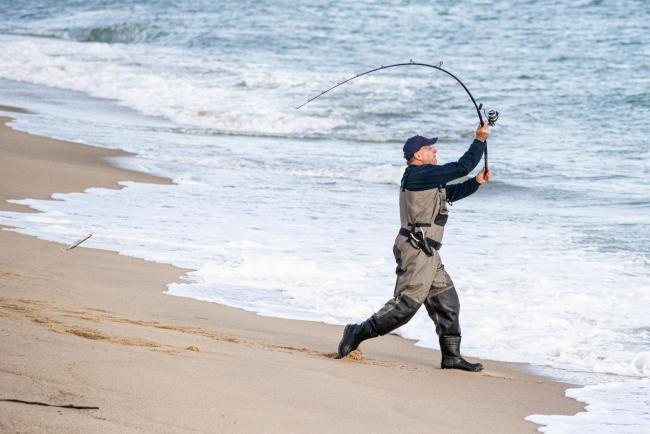



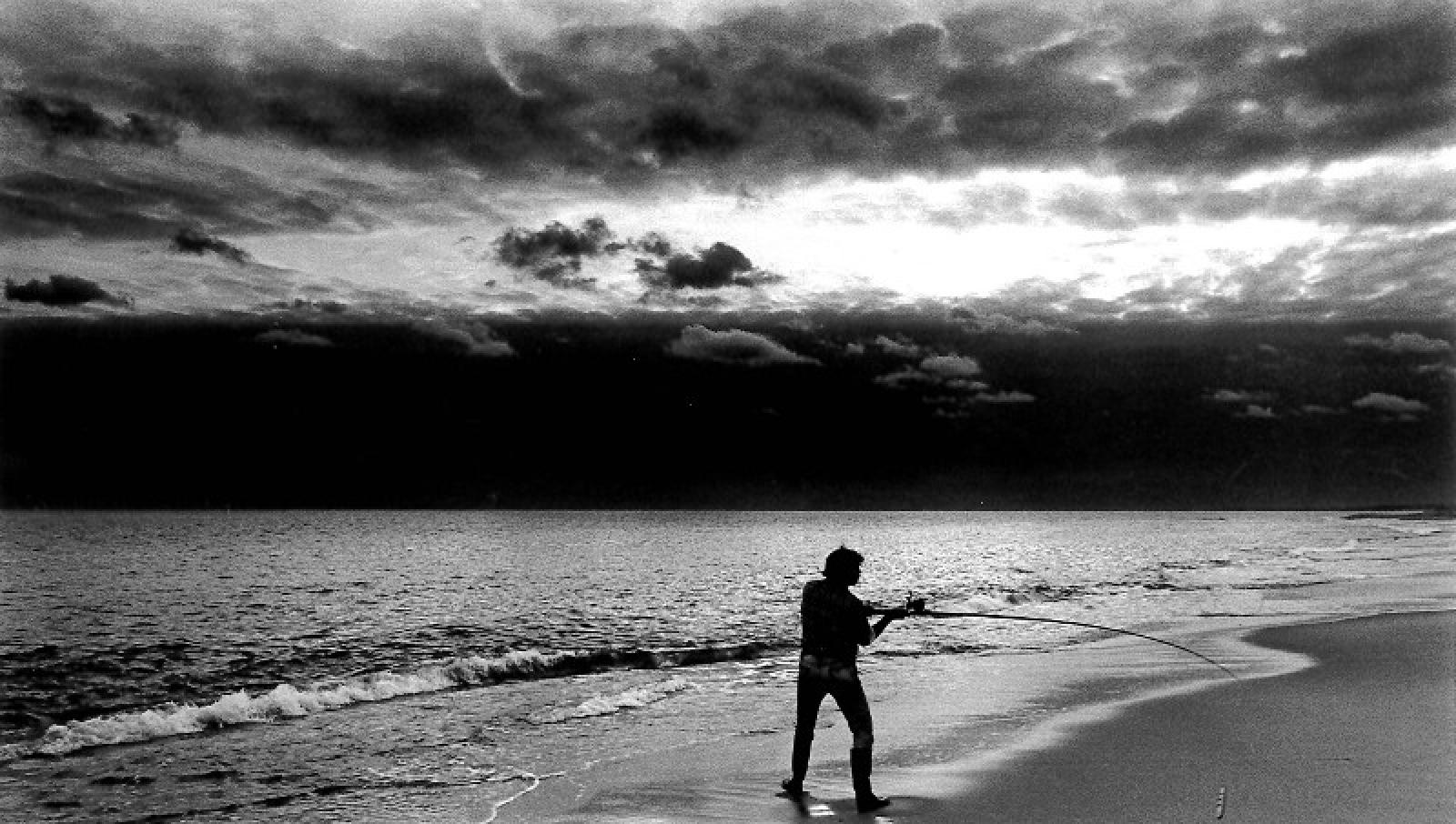

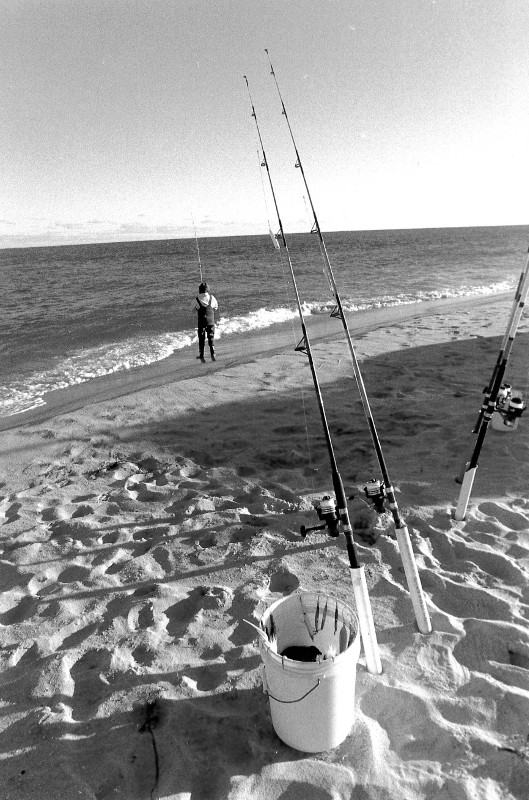
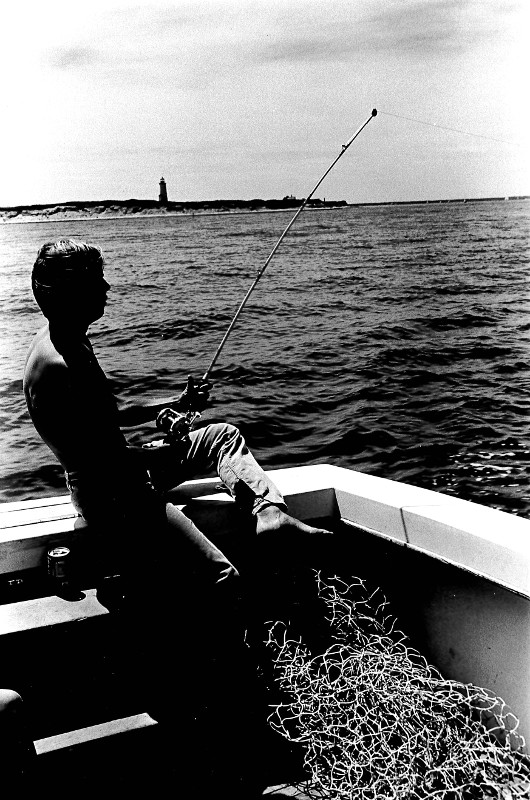
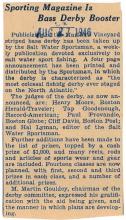
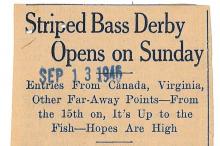
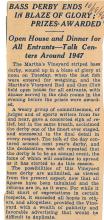
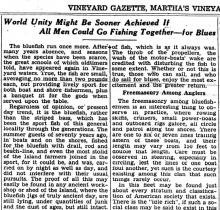
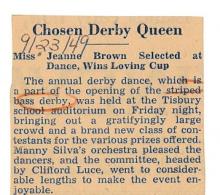
Comments